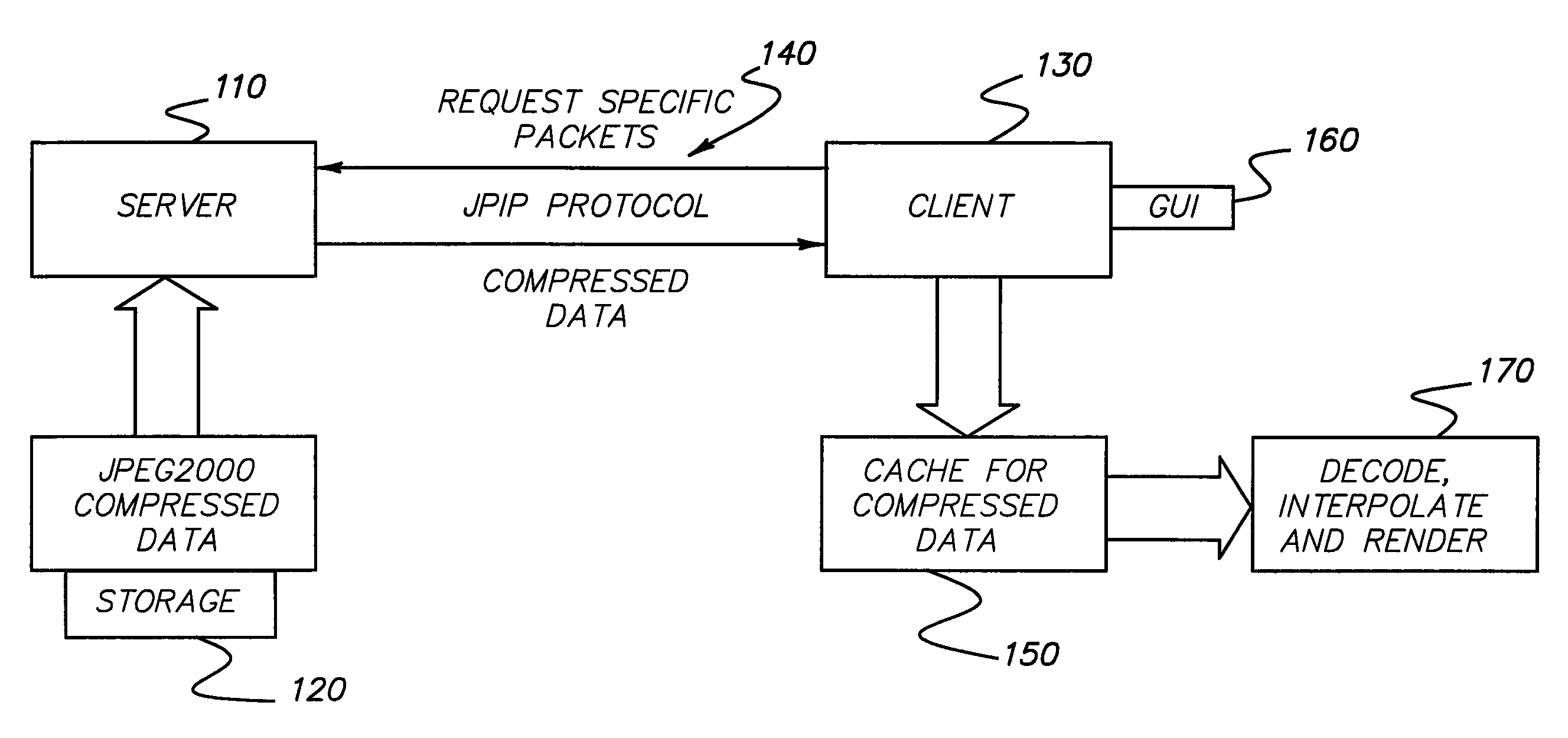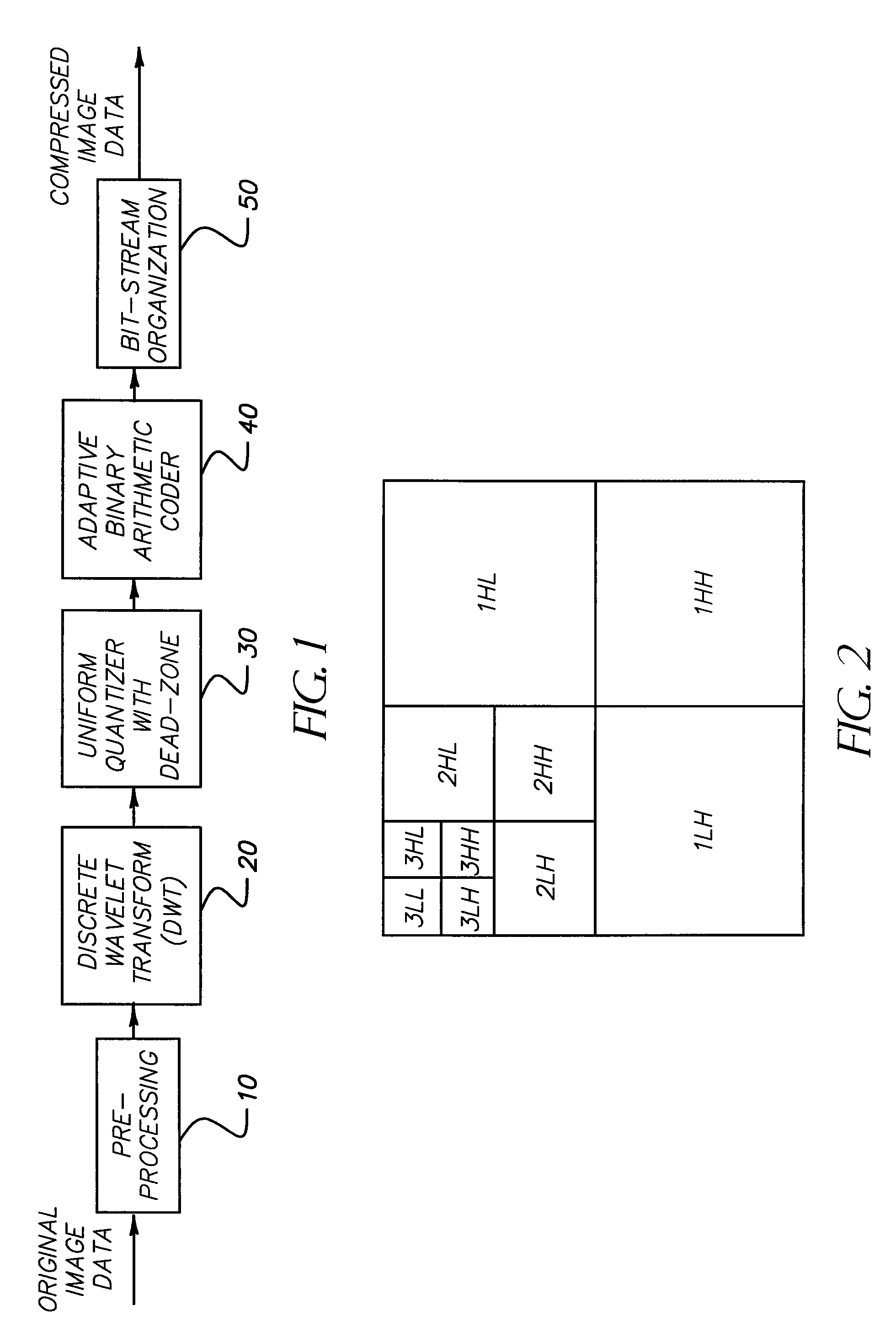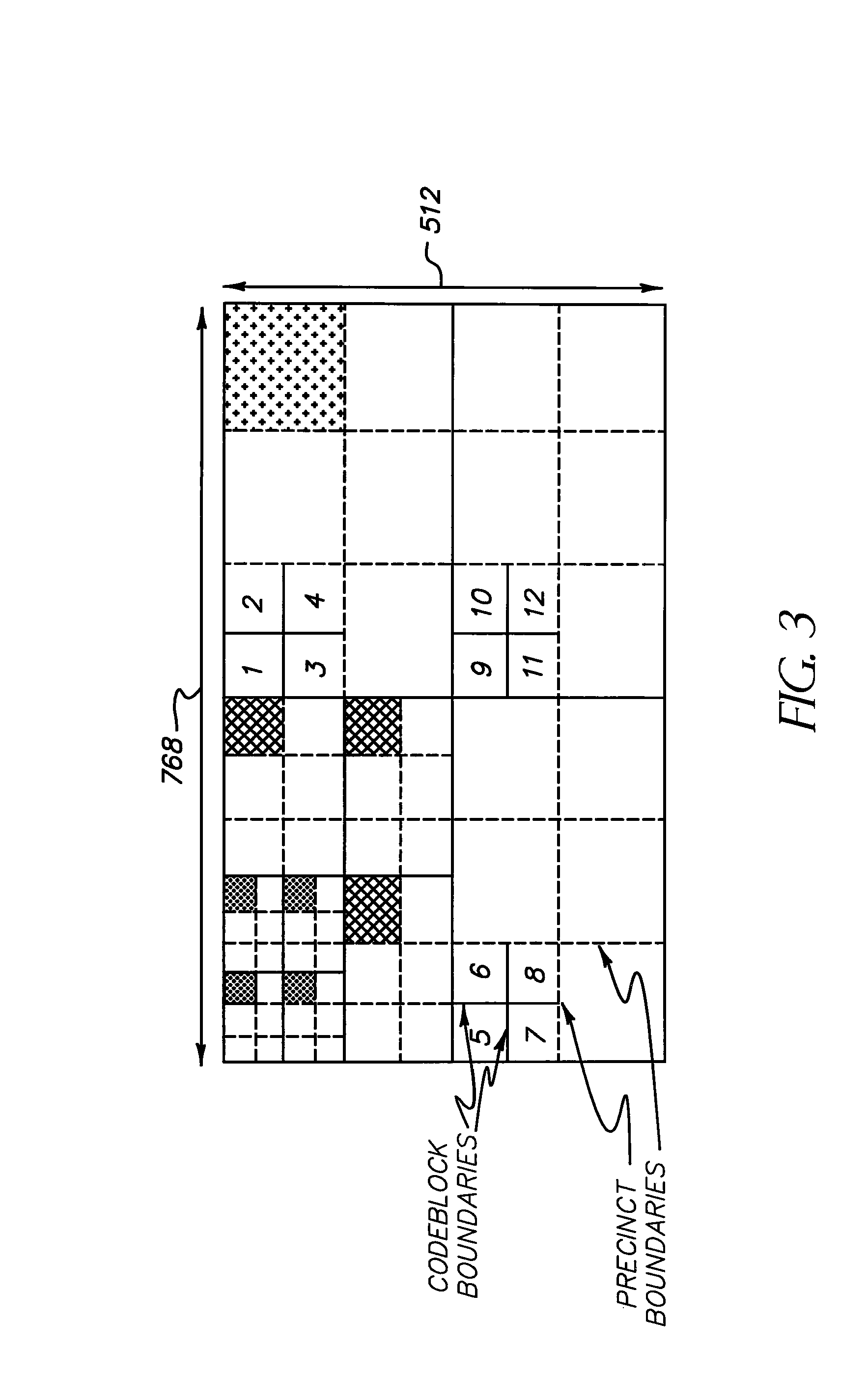System and method for rendering an oblique slice through volumetric data accessed via a client-server architecture
a client-server architecture and volumetric data technology, applied in the field of medical imaging, can solve the problems of inability to reuse data transmitted in response to previous requests, server load, and exponential increase in volumetric data that needs to be stored and transmitted
- Summary
- Abstract
- Description
- Claims
- Application Information
AI Technical Summary
Benefits of technology
Problems solved by technology
Method used
Image
Examples
Embodiment Construction
[0036]Because medical imaging systems employing diagnostic imaging devices (such as CT and MRI devices) and related circuitry and software for diagnostic image processing are well known, the present description will be directed in particular to elements forming part of, or cooperating more directly with, system and method in accordance with the present invention. Elements not specifically shown or described herein may be selected from those known in the art. Certain aspects of the embodiments to be described may be provided in software. Given the system and method as shown and described according to the invention in the following materials, software not specifically shown, described or suggested herein that is useful for implementation of the invention is conventional and within the ordinary skill in such arts. In such implementations, the software may be embodied in a computer program product.
[0037]A computer program product may include one or more storage media, for example; magne...
PUM
 Login to View More
Login to View More Abstract
Description
Claims
Application Information
 Login to View More
Login to View More - R&D
- Intellectual Property
- Life Sciences
- Materials
- Tech Scout
- Unparalleled Data Quality
- Higher Quality Content
- 60% Fewer Hallucinations
Browse by: Latest US Patents, China's latest patents, Technical Efficacy Thesaurus, Application Domain, Technology Topic, Popular Technical Reports.
© 2025 PatSnap. All rights reserved.Legal|Privacy policy|Modern Slavery Act Transparency Statement|Sitemap|About US| Contact US: help@patsnap.com



